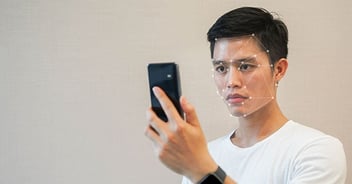In recent years, there’s been a rise in the use of biometric identification methods to verify the identity of individuals. From fingerprint and iris scanners to facial recognition and behavioral biometrics, businesses are increasingly turning to technology to authenticate the identities of their employees and customers. Biometric identity verification involves comparing a person's biometric data against a stored template to confirm their identity. This method of authentication is increasingly popular because it offers a high level of accuracy and security compared to traditional methods like passwords or PINs, which can be easily forgotten, stolen, or guessed.
But are customers aware you're using biometrics to identify them? And more importantly, is it ethical to do so without their knowledge or consent? First things first, let’s understand the difference between biometrics and behavioral biometrics.
What are biometrics?
Biometrics refer to the measurement and analysis of unique physical or behavioral characteristics of an individual for the purpose of verifying their identity. This technology uses automated methods to recognize and analyze physical traits such as fingerprints, facial features, iris and retina patterns, and voice.
In many industries, including banking, healthcare, and government, biometric identity verification is being used to enhance security and prevent identity fraud.
What are behavioral biometrics?
Behavioral biometrics is the science of measuring and analyzing human behavior, or behavioral characteristics, for the purpose of identification. Behavioral biometrics goes beyond traditional methods of biometric identification by considering factors such as how an individual navigates a site, their typical device orientation, usage and typing patterns, and even fingerprint pressure.
In other words, behavioral biometrics is a way of identifying people based on their unique behaviors. And while this may sound like something out of a sci-fi novel, the truth is behavioral biometrics are already being used by businesses all over the world.
The use of behavioral biometrics in fraud prevention
Businesses have long used biometric identification methods to verify the identity of employees and customers. However, with the arrival of behavioral biometrics, there’s a new way for businesses to identify individuals: by their behavior.
Behavioral biometrics can be used for many purposes, including access control, user authentication, and fraud prevention. For example, banks use behavioral biometrics to detect and prevent fraudulent activity in real-time. By analyzing an individual's behavior when they're using digital banking services, banks can identify anomalies that may indicate fraud. Similarly, businesses such as insurance and retail use behavioral biometrics to authenticate the identities of visitors and customers, especially when those visitors are attempting to open a new account or change an existing profile.
By layering behavioral biometrics onto existing fraud detection solutions, businesses can proactively identify fraudulent behavior in real-time to effectively prevent the fraud. It also acts as an additional layer of defense - for example, if an individual’s password is stolen, or their facial scan duplicated, the behavioral biometrics profile will be the deciding factor in whether the active user is the legitimate user. It’s the ultimate contingency plan for fraud prevention.
The Ethics of Behavioral Biometrics
While the use of behavioral biometrics offers many potential benefits for businesses, it also raises some important ethical questions. Namely, should businesses be using behavioral biometrics without the knowledge or consent of their employees and customers?
On one hand, some may argue the use of behavioral biometrics amounts to invasion of privacy. After all, when you're being monitored for your behavior, it can feel like you're always under scrutiny. And if businesses are using behavioral biometrics without informing their employees or customers, it could be seen as a devious way of collecting data on people without their knowledge or consent.
On the other hand, behavioral biometrics can't actually physically identify an individual - it's more of a comparison tool to confirm identity. There’s also a valid argument that businesses have a duty to protect both their customers and their company from fraud and identity theft. By using behavioral biometrics to identify individuals, businesses can proactively prevent these crimes from occurring in the first place. And since behavioral biometrics don’t include any PII, it’s arguably more secure and more ethical than traditional verification methods like date of birth, social security, and even passwords. Similarly, data files containing traditional biometrics like iris scans and facial scans can be stolen and the features replicated. Behaviors can’t. Even if the data files were somehow stolen by a fraudster, they’d never be able to replicate it because it’s an action, not a “thing”.
When you think about it, what does behavioral biometrics really hurt in terms of privacy? Is my typing pressure sensitive or personal? Or how I swipe? Certainly not as much as my face or fingerprint. To put it in perspective, fingerprints and facial/iris scans can specifically identify an individual, but behaviors can only validate that an individual’s current behaviors match their typical or historical behaviors. It’s not an identity verification solution on its own, but a complementary tool to enhance the accuracy of digital identification.
At the end of the day, it's up to each business to decide whether they want to use behavioral biometrics. But to adapt to the ongoing evolution of fraud and move to real-time fraud prevention, we highly recommend organizations consider the enormous benefits of this technology.







